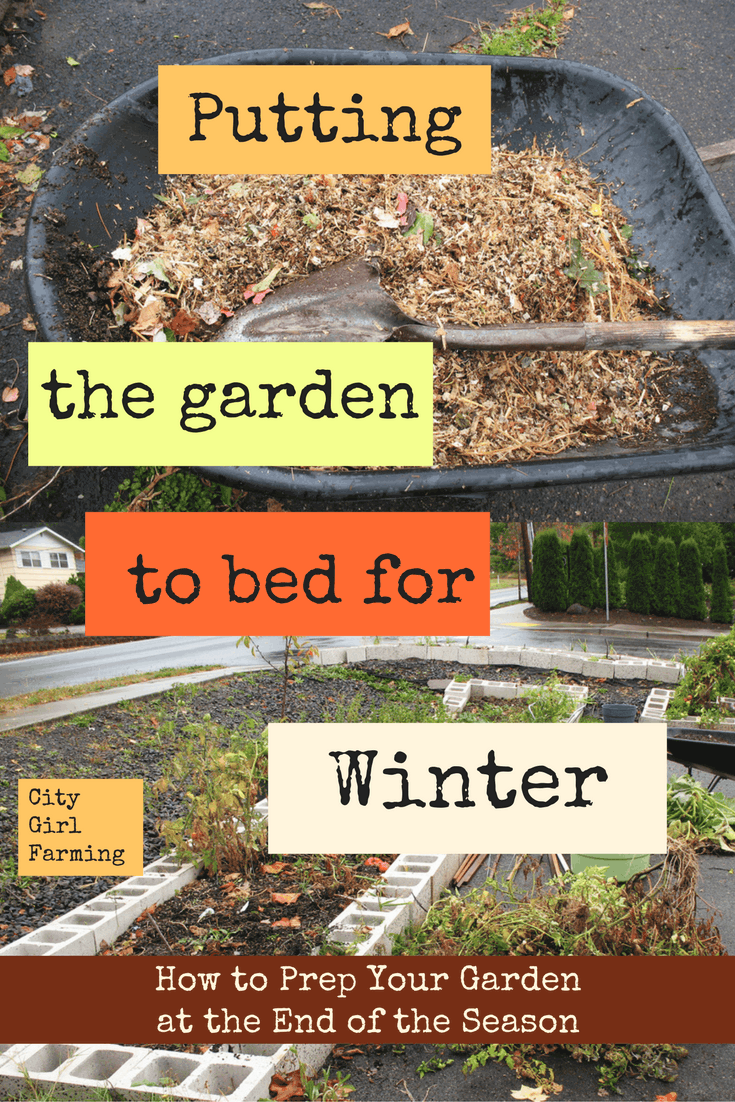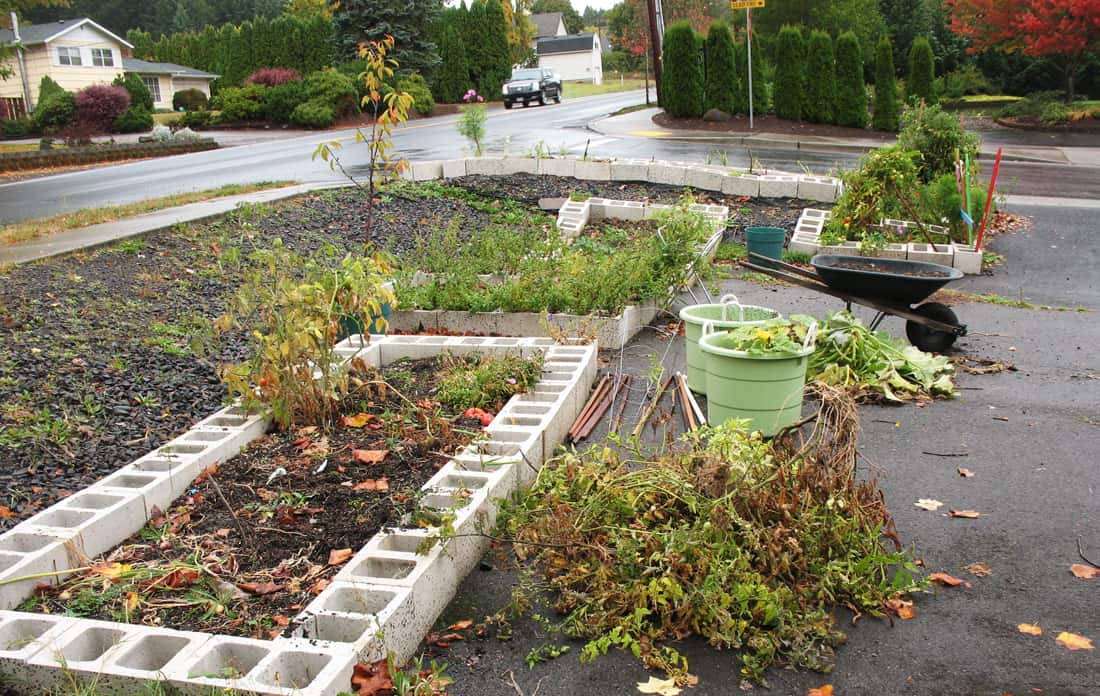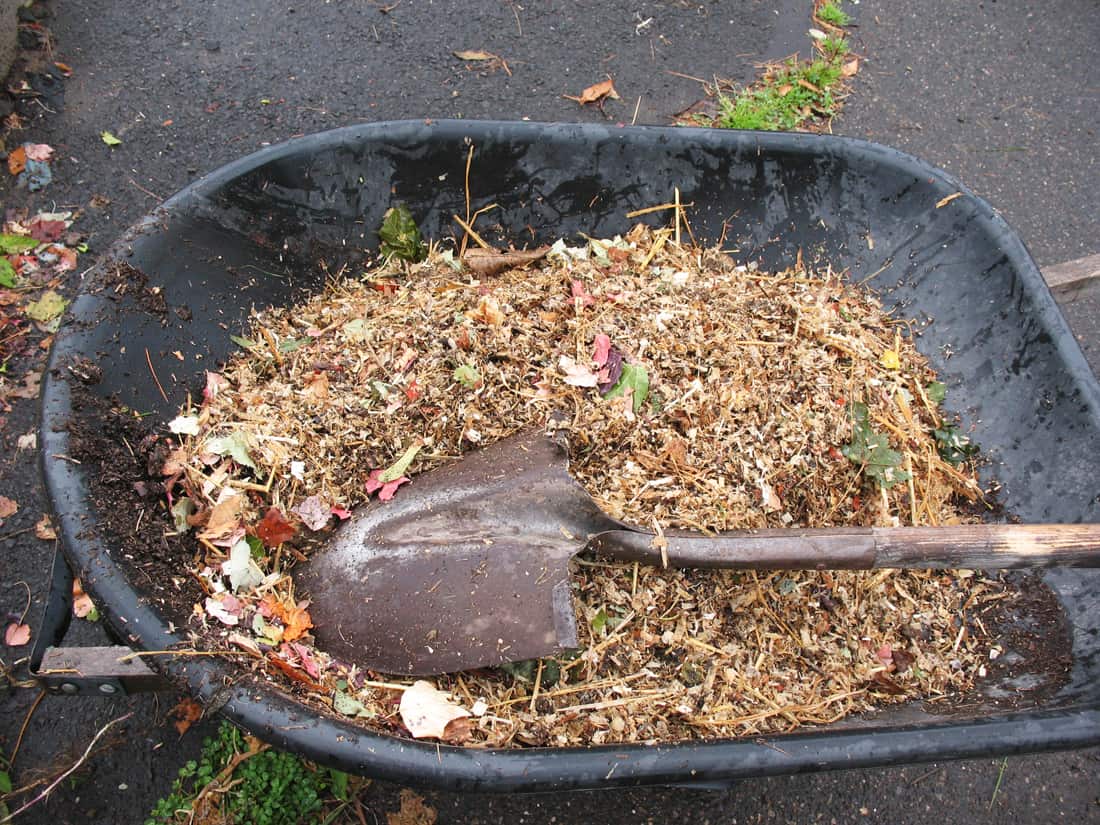
I always hate winter prep for the garden because it signals the end of the abundant organic food in the yard. (While I can appreciate the changing of seasons, I love summer best of all!) Yet, preparing the garden is an important part of moving into winter and will make everything better next spring.
In preparation for what is to come, I’ve been doing work on the garden spaces as well as helping the chickens get ready for the change in the weather. There’s a flurry of activity as I try to put the garden to bed and brace the chickens for winter, while working in fits and starts between rain storms (and before the rain comes without stopping!).
Whew. There’s so much to do.

Winter Prep Garden:
Picking the Last of the Veggies
The first step with winter prep is to harvest any remaining hanging-on veggies and fruit.
I’ve already pulled all the tomatoes off the vines and made some into green tomato sauce (here’s the recipe) and have some others tucked inside brown bags, waiting for them to ripen. Another big task ahead of me is pulling out the beans. For me, beans means DRIED beans. I save my beans until the end of the summer/early fall and shell them dry. I’ve been shelling for a while now, but there’s still TONS of beans on the vines that aren’t dry yet. I will clip off the nearly dry beans and pull the vines up and hang them in the carport for the rest of the beans to dry.
In some areas (like here in the Pacific NW), you can leave some of your root veggies in the ground and harvest them all winter. I’ve left my beets and carrots like this. I will have to put a layer of mulch over the to protect them from (possible) freezing. Otherwise, I can just go out and pull them up as I need them.
Winter squash can be picked (make sure to leave a bit of the stem, it will keep them from rotting as quickly), washed (some people use a solution of vinegar water to kill the spores, etc. on the outside which can contribute to rot) and well dried. If they’re stored in a cool, dry place, they can last up to (nearly) a year, depending on the kind of squash it is.
Plants for Compost (and Not)
Once I have all the remaining food harvested, I separate the plants into compost and non-compost piles as I pull them out of the garden. While everything, technically, can go into the compost, I don’t put it all in there. I purposely keep the tomato and potato plants out of my compost, as my bins are open and my chickens think compost-diving is an Olympic sport. I don’t want them to accidentally eat something that would be bad (potentially even fatal) for them, so I don’t take any chances. (I also never put avocado shells or green potatoes in the compost for the same reason.)
Cover Crops or Not?
This year, on the advice of a guy who has a 5,000 square foot garden area, I’m not going to plant cover crops in all my raised bed garden spaces.
For the raised beds, I’m trying what he does: I took compost that’s in the in between stage—not quite dirt yet, but partly broken down—and ran it in a long pile down the center of my raised beds. Then, I took the dirt on either side of this pile and dug it up, piling it on top of compost I just added.
That’s how he leaves it all winter. So, that’s what I’m going to try. I figure he might know a thing or two about gardening. He says his family never ever buys produce at the store because they grow enough of it to meet their needs, YEAR ROUND! That’s enough to impress me!
What Is a Cover Crop?
But cover crops are good too. And for my non-raised beds, I’m going to plant red clover. I especially want to boost up the soil in my new (this year) garden space out back. (I live where the soil contains a lot of clay.) I like that cover crops can work for me all winter and make my soil better by next spring.

If you’re new to cover crops, they’re seeds that you plant in the fall to help your soil in all sorts of ways (such as adding needed nutrients to the soil and helping to keep weeds down). If you’re interested in learning more about cover crops, here’s a great site that tells you just about anything you might want to know about how to pick the right cover crop, the benefits of planting a cover crop and more.
Now….let’s dream of next year….
Once the garden is put to bed, grab yourself something great to drink. Drink it slow and enjoy yourself (kinda like after the kids are finally in bed and you can relax)….and dream of all those new things you want to grow/try/do in next summer’s garden!

